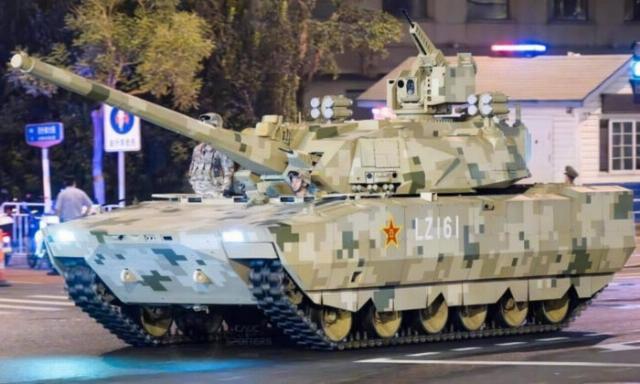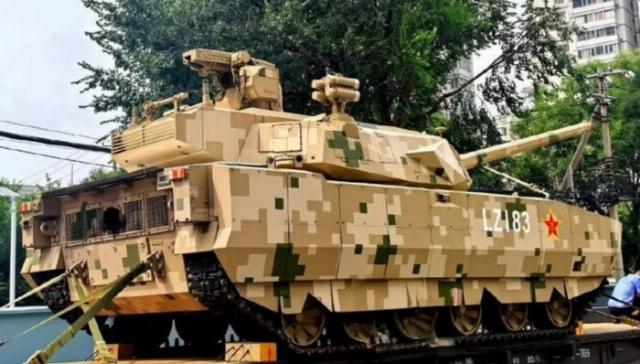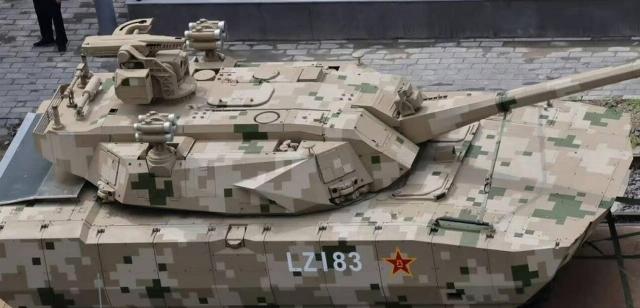The appearance of an increasing number of videos showing the new MBT (main battle tank) developed for the Ground Forces of the People's Liberation Army of China (PLA) indicates a radical change in design priorities, which, apparently, were strongly influenced by the lessons of intense tank battles that occurred during the Russian-Ukrainian war.
One of the most significant changes is the abandonment of the standard 125 mm smoothbore cannon in favor of a much smaller 105 mm cannon, which indicates a shift in emphasis from tank battles. The installation of a smaller-caliber gun made it possible to significantly reduce the weight of the new tank and, probably, increase its ammunition capacity by reducing penetration in relation to modern enemy armor. Apparently, this is a response to a new reality in which tank battles will be rare, as it was in Ukraine.

The new MBT of China
Modern armies are expected to increasingly rely on drones and anti-tank guided missiles (ATGMs) to combat enemy armored vehicles. Instead, tanks are mainly used to support infantry and fight enemy infantry and fortifications. China's transformation into a world leader in both UAVs and ATGM such as the HJ-10 is expected to further reduce the need for its new MBT to frequently engage enemy armored vehicles with its main cannon.
There is also a significant possibility that the improvement of Chinese armor-piercing projectiles has strengthened confidence that even a 105-mm cannon can provide sufficient penetration. The improved design of the tank with a lighter cannon is expected to provide particularly high mobility, as well as a compact vehicle for transportation both by air and by sea. It is likely that two tanks can be loaded into a Y-20 strategic transport aircraft, unlike a single Type 99 or Type 96 tank.
The new MBT of the PLA is equipped with a large number of cameras on the body and several antennas for active radar systems with electronic scanning on the tower, which indicates that a high degree of situational awareness was given priority during its development. This is extremely important so that the machine can optimally fulfill the role of an advanced reinforcement tool for drones, artillery and other types of auxiliary equipment.

The new MBT of the PLA
It is assumed that these sensors will provide early warning of an attack by drones and ATGMs, as well as send a signal to the tank's active protection system for their automatic destruction. As in the case of the previous Russian T-14 tank, which was introduced in 2015, but the development of which was greatly delayed, in the new Chinese tank the crew is located side by side inside the hull, which indicates a high level of automation. It is expected that this arrangement will reduce the burden on the commander, allowing him to control the drone or perform other new functions.
The new Chinese MBT as a whole represents the most modern and revolutionary design that has ever reached the prototype stage since the beginning of the century. It demonstrates the ability of the Chinese defense sector to adapt particularly quickly to new realities. Traditional MBTs, created on the basis of developments from the Cold War, have demonstrated significant vulnerability in the Ukrainian theater of operations. 87 percent of the M1A1 Abrams tanks supplied to Ukraine by the United States were lost within 16 months of the outbreak of hostilities. Most of the Leopard 2 tanks, supplied from different European countries, were destroyed even faster.
The T-72B3 MBT, which formed the basis of the tank units of the Russian army, also proved extremely vulnerable in the first months of hostilities, in particular to attacks using portable ATGMs, such as the Javelin ATGM supplied by the United States. Despite these severe losses, the adaptations undertaken by Russia, Ukraine, and Western countries to reduce vulnerability have nevertheless proved to be much less drastic than the changes proposed by China in its new MBT. It will probably take several years before other countries can adapt in a similar way.
Source: militarywatchmagazine.com

